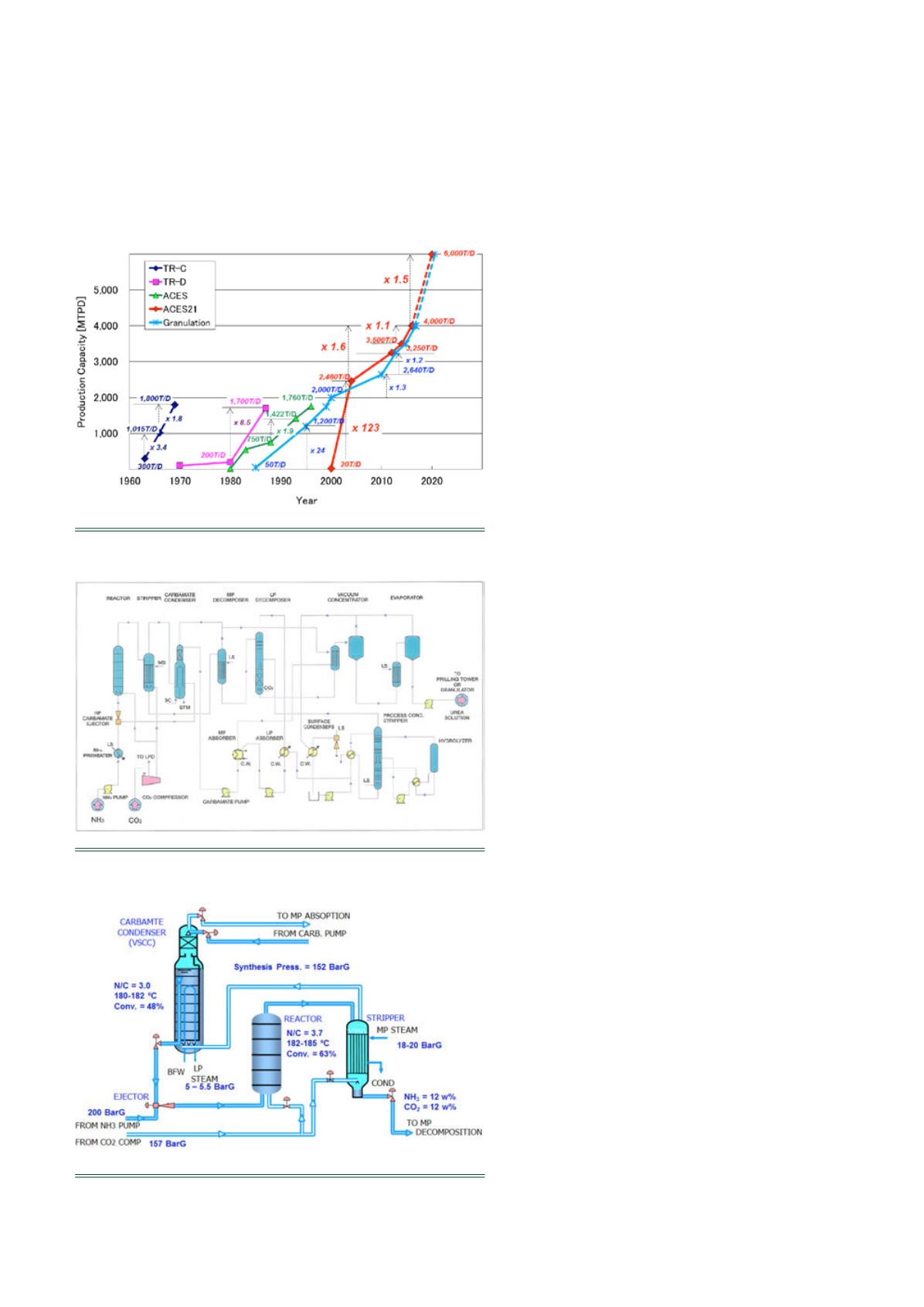
22
| WORLD FERTILIZER |
NOVEMBER 2016
non-hydrocarbon fields such as power generation and
infrastructures, and industrial plants, such as
pharmaceutical and fine chemicals.
TOYO is a leader in the urea industry as a urea process
licensor and has designed and engineered over 120 urea
plants using the company’s own urea process, including its
urea synthesis technologies and urea granulation
technologies.
Using the company’s expertise and advanced
technology, TOYO has established the ACES21® urea
process,
1
which saves energy and reduces plant costs
without sacrificing the performance or efficiency of the
urea plant. ACES21 has been developed together with P.T.
Pupuk Sriwidjaja (PUSRI) of Indonesia, as a further cost
and energy saving version of the ACES (advanced process
for cost and energy saving) process.
The ACES and the spout-fluid bed urea granulation
process came into operation in the early 1980s.
Following this, TOYO commenced R&D work on a new
urea process, aiming to reduce plant investment costs
and save energy consumption further. The new
process, ACES21, became available for industrial
application in the late 1990s.
As a urea process licensor, TOYO has successfully
scaled up its own urea processes, in response to the
diverse and increasing demands of the nitrogen
fertilizer sector. Figure 1 shows the scale-up history of
the various urea processes, from traditional Total
Recycle C (TR-C) to the latest ACES21.
Since 2010, TOYO has been awarded two
‘mega-plant’ contracts, one to construct a 3500 tpd
urea plant in Indonesia and the other to construct a
4000 tpd urea plant in Nigeria, based on ACES21 and
the spout-fluid bed urea granulation technologies.
This article describes the process features of
ACES21 and the spout-fluid bed urea granulation
process, and details the experience of these two
recent ‘mega-plant’ contracts.
ACES21
Figure 2 shows a typical process flow diagram for an
ACES21 urea plant and Figure 3 shows a schematic
flow sheet of an ACES21 synthesis section consisting
of a reactor, a stripper and a carbamate condenser.
Liquid ammonia is fed to the reactor via a HP
carbamate ejector, which provides the driving force
for circulation in the synthesis loop, instead of
gravity, which was used in the original ACES process.
Most of the carbon dioxide, alongside a small amount
of passivation air, is fed to the stripper as a stripping
medium and a raw material for urea synthesis, and the
rest is fed to the reactor as a raw material and to
passivate the reactor. The reactor is operated at N/C
ratio of 3.7, 182 – 185°C and 152 barG. The CO
2
conversion to urea is as high as 63% at the exit of the
reactor. Carbamate solution from the carbamate
condenser is fed to the reactor after being pumped
by the HP ejector that is motivated by high-pressure
liquid ammonia. The urea synthesis solution leaving
the reactor is fed to the stripper where unconverted
carbamate is thermally decomposed and excess
ammonia and CO
2
are efficiently separated by CO
2
stripping. The stripped urea solution is sent to the MP
decomposition stage to be purified further. The
stripped off gas from the stripper is fed to a vertical
submerged carbamate condenser (VSCC), operated at
N/C ratio of 3.0, 180 – 182°C and 152 barG. Ammonia
and CO
2
gas condenses to form ammonium carbamate
Figure 1.
Scale-up history of TOYO’s urea process.
Figure 2.
Flow diagram of ACES21 urea process.
Figure 3.
ACES21 synthesis section.


